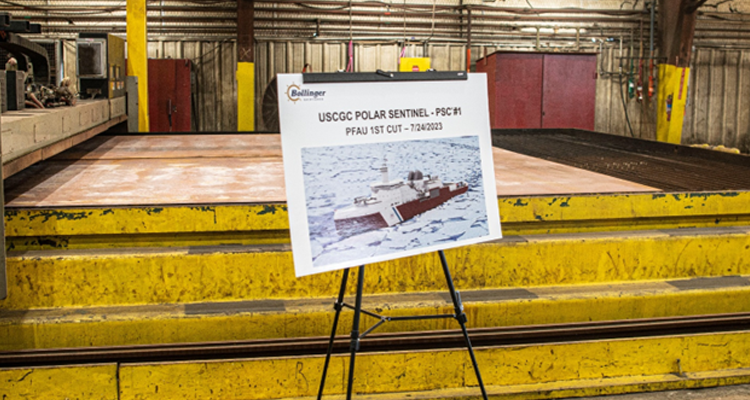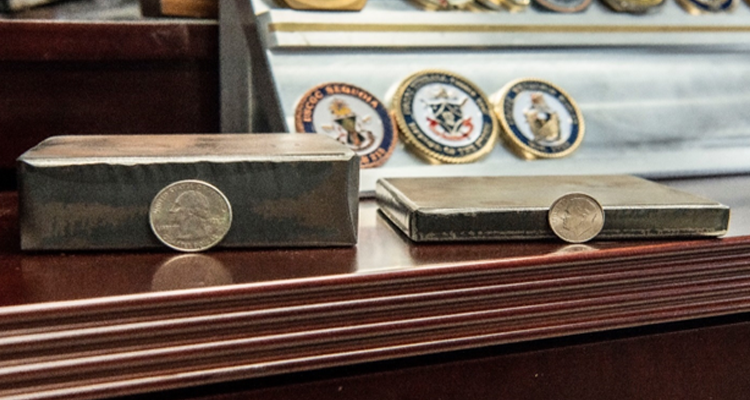Aug. 4, 2023 —

Steel stands ready to be cut for production of prototype fabrication modules to support future construction of the first polar icebreaker to be built by the United States in over 50 years. U.S. Coast Guard photo.
Bollinger Mississippi Shipbuilding began cutting steel July 24, 2023, on the first prototype module that will become the foundation of a new polar security cutter (PSC), the first heavy icebreaker to be built in the United States in 50 years. Up to eight modules will be constructed in Pascagoula, Mississippi, to prototype the shipbuilding processes and techniques that will be used when production of the first PSC begins in 2024.
“We’re relearning how to build this type of ship,” said PSC program manager Capt. Eric Drey, describing the construction approach being employed by Bollinger during the prototype phase.
The progressive crawl-walk-run approach consists of verifying the processes utilized during the build to ensure design completeness. This includes unit readiness reviews, ensuring engineering, computer aided design systems accurately transfer numerical control data to automated production machinery and slowing down early prototype module build times to maximize learning and enable improvements in the downstream production, engineering, and planning processes. Each module requires approximately four months of labor, during which time the shipyard will continue recruiting and training additional members of the workforce to manage the transition to production of the lead hull as the prototype modules are completed.
The hull of a heavy polar icebreaker is required to be much thicker than other Coast Guard cutters because of the pressure exerted on the ship by the surrounding ice. Deeper, more closely spaced structural stiffeners inside the hull ensure the ship doesn’t crumple when it encounters large ice floes, and the hull itself is constructed of 1 1/2-inch-thick steel alloy that remains flexible even in extremely low temperatures.
“It’s the first heavy icebreaker built by our nation in 50 years,” said Drey. “It’s not just a big day for the Coast Guard, but a big day for the nation.” The PSCs will be multi-mission cutters capable of supporting all Coast Guard statutory missions executed in the polar regions.
The Coast Guard’s operational polar icebreaking fleet currently consists of one heavy icebreaker, the 399-foot Coast Guard Cutter Polar Star that was commissioned in 1976, and one medium icebreaker, the 420-foot Coast Guard Cutter Healy that was commissioned in 1999.
Coast Guard mission demand in the polar regions is growing as environmental and economic activities continue to increase. The Coast Guard has identified a need for new polar icebreakers to assure year-round access to the polar regions and to provide self-rescue capabilities. PSCs enable the United States to maintain defense readiness in the Arctic and Antarctic regions; enforce treaties and other laws needed to safeguard both industry and the environment; provide ports, waterways and coastal security; and provide logistical support – including vessel escort – to facilitate the movement of goods and personnel necessary to support scientific research, commerce, national security activities, and maritime safety.

A quarter and a dime are used to demonstrate the difference in the hull thickness of a PSC as compared to other Coast Guard cutters. U.S. Coast Guard Photo.

A Bollinger Shipyard worker makes the first cuts on prototype modules that will shape future production of the Nation’s newest heavy polar icebreaker. U.S. Coast Guard photo.
For more information: Polar Security Cutter Program page.